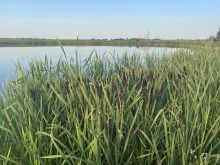Low prices and high input costs threaten to drive down prairie corn production next year, especially in Manitoba.
But in the United States, American corn growers say they will again plant a large crop, making any reductions in Western Canada seem irrelevant.
There were about 100,000 acres of corn grown in Manitoba this year. Theresa Bergsma, secretary manager of Manitoba Corn Growers, said the outlook for next year is grim.
“If the price doesn’t change over the winter, I think we’re going to see a lot less acres,” said Bergsma, whose association is backing a trade challenge against U.S. corn imports.
Read Also

Europe holds promise for Canadian lentils
Pulse Canada is trying to help boost lentil consumption in Europe, which is already the fourth largest market.
“Fertilizer and fuel prices are a big factor in that. It simply is going to be very tough.”
Alberta corn growers are generally more immune to spikes in fertilizer costs. Most of the corn there is grown for silage on fields fertilized with manure from the province’s so-called feedlot alley. Because of that, corn acres in Alberta should remain steady, said Kent MacDonald, a crop specialist with Alberta Agriculture.
The wild rose province averaged a little less than 40,000 acres of corn in the previous three years. This year that number rose to 50,000 acres.
“We’re probably not going to shift,” said MacDonald. “We might go to the low end of the range versus the high end.”
Meanwhile, American growers were sharpening their pencils this fall to figure out how to make corn work on their farms in spite of the sharp rise in fertilizer and fuel costs.
Locking in prices and supplies through fertilizer co-operatives has been one strategy. They are also considering ways to make their nitrogen use more efficient, and they are investigating the merits of importing fertilizer from offshore.
There have been suggestions that a half million acres could be pulled out of U.S. corn production next year because of rising input costs.
However, a lot can change between now and next spring and a half million acres is minuscule by comparison to the 81.6 million acres of corn grown in the U.S. this year.
“The higher fertilizer cost is going to squeeze our profitability,” said Paul Bertels, director of biotechnology and economic analysis for the U.S. National Corn Growers Association.
“We’re going to see some acreage come out of corn, but it’s a little too early to put a number on that.”
Bill Chase, a crop and livestock producer at Wolsey, South Dakota, is among those determined to grow corn again next year.
However, he said higher input costs could push down U.S. corn produc-
tion, even if plantings remain high.
“I don’t think it’ll scare guys away from planting corn, but they may back off from how much fertilizer they use.”














